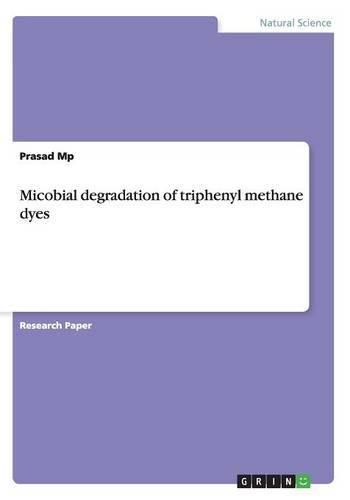Readings Newsletter
Become a Readings Member to make your shopping experience even easier.
Sign in or sign up for free!
You’re not far away from qualifying for FREE standard shipping within Australia
You’ve qualified for FREE standard shipping within Australia
The cart is loading…






Research Paper (postgraduate) from the year 2012 in the subject Chemistry - Bio-chemistry, course: MASTER DEGREE, language: English, abstract: Try phenyl methane dyes have been found in soil and river sediments as consequences of improper chemical waste disposal. 10000 dyes and pigments are produced annually world wide amounting to 7*107tones which are hazardous and pose serious environmental problems. It is estimated that 10-15% of the dye is lost in the effluent during the dying process. Try phenyl methane dye decolorizing bacteria have been isolated; there are few reports of specific enzymes that decolorize these dyes. Isolate bacterial strains which had the capability to decolorize textile dye like bromophenol blue, crystal violet and malacate green. We estimate the decolorization percentage for all the three tri phenyl methane dyes and quantify the activity of the TMR enzyme that degrades try phenyl methane dye and characterize the dye degrading organism as pseudomonas species.
$9.00 standard shipping within Australia
FREE standard shipping within Australia for orders over $100.00
Express & International shipping calculated at checkout
Research Paper (postgraduate) from the year 2012 in the subject Chemistry - Bio-chemistry, course: MASTER DEGREE, language: English, abstract: Try phenyl methane dyes have been found in soil and river sediments as consequences of improper chemical waste disposal. 10000 dyes and pigments are produced annually world wide amounting to 7*107tones which are hazardous and pose serious environmental problems. It is estimated that 10-15% of the dye is lost in the effluent during the dying process. Try phenyl methane dye decolorizing bacteria have been isolated; there are few reports of specific enzymes that decolorize these dyes. Isolate bacterial strains which had the capability to decolorize textile dye like bromophenol blue, crystal violet and malacate green. We estimate the decolorization percentage for all the three tri phenyl methane dyes and quantify the activity of the TMR enzyme that degrades try phenyl methane dye and characterize the dye degrading organism as pseudomonas species.